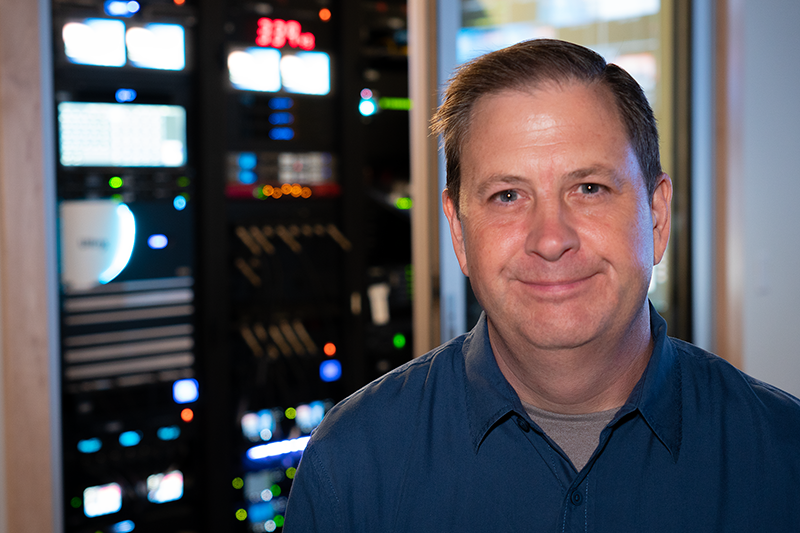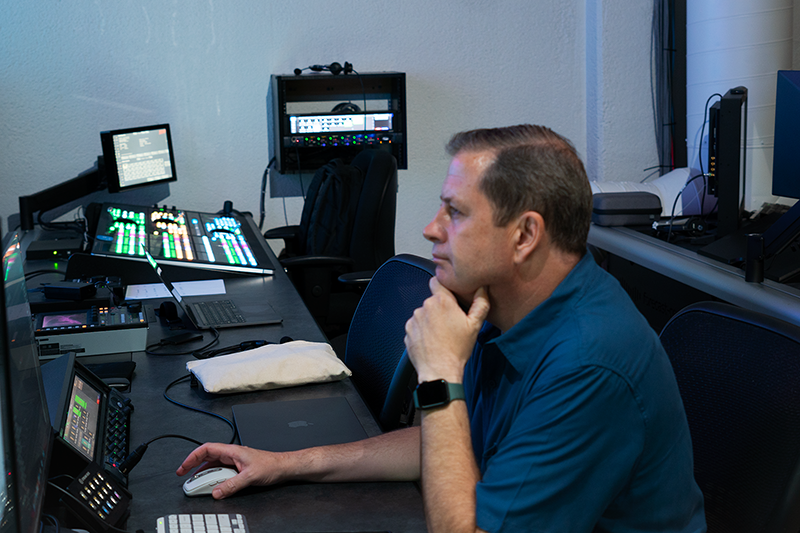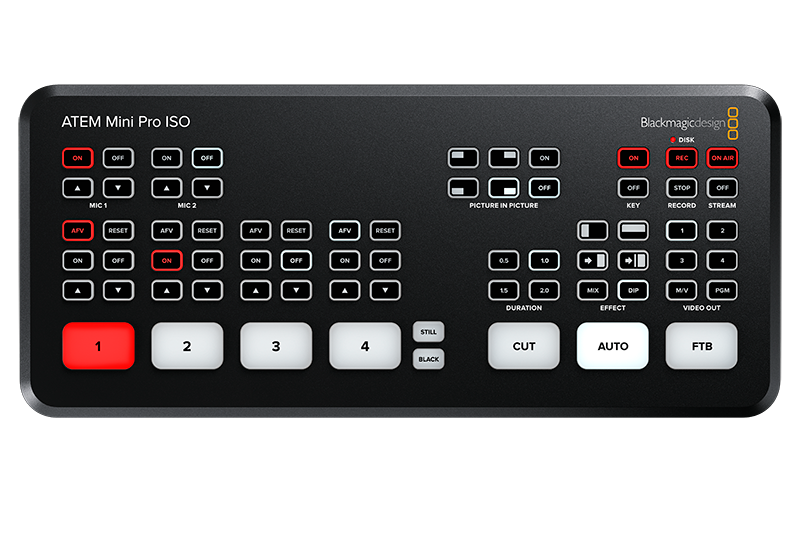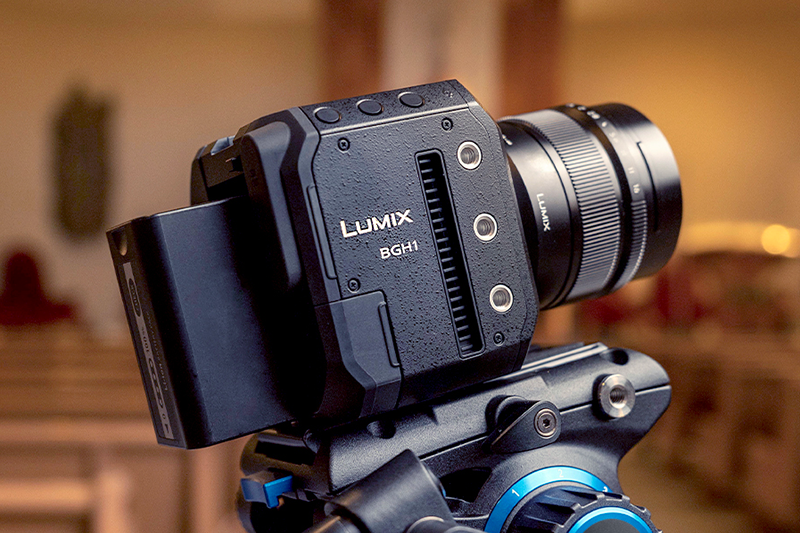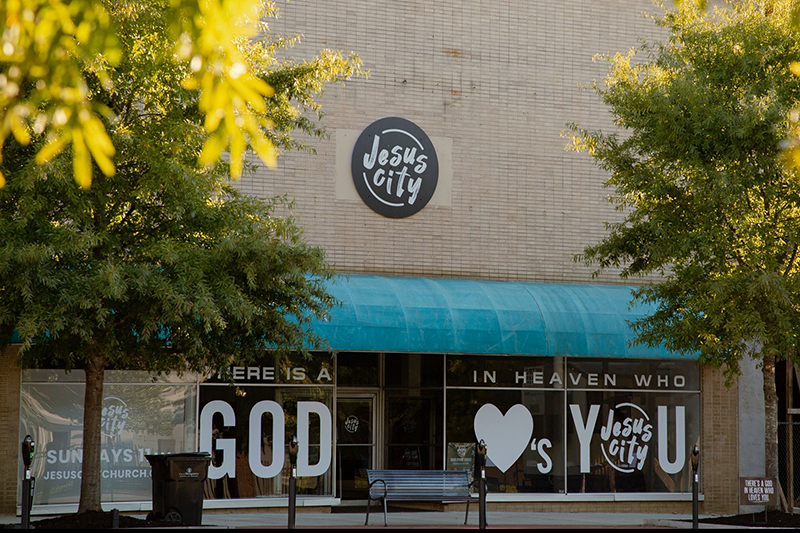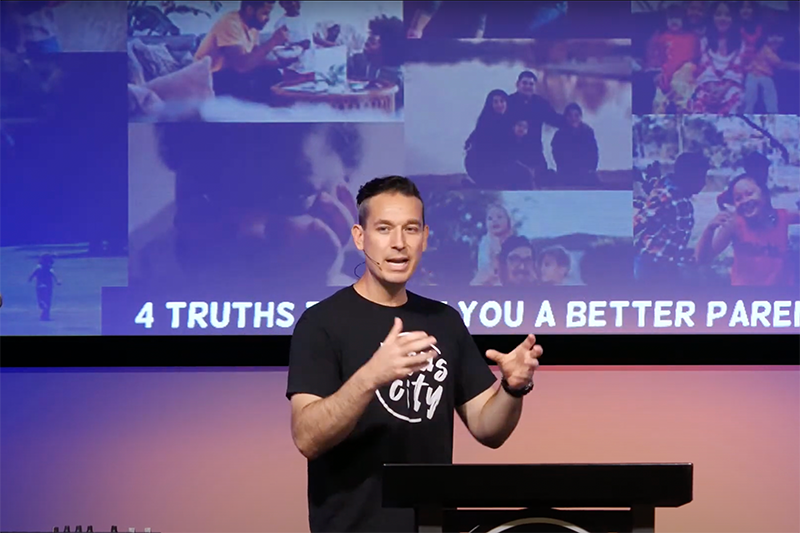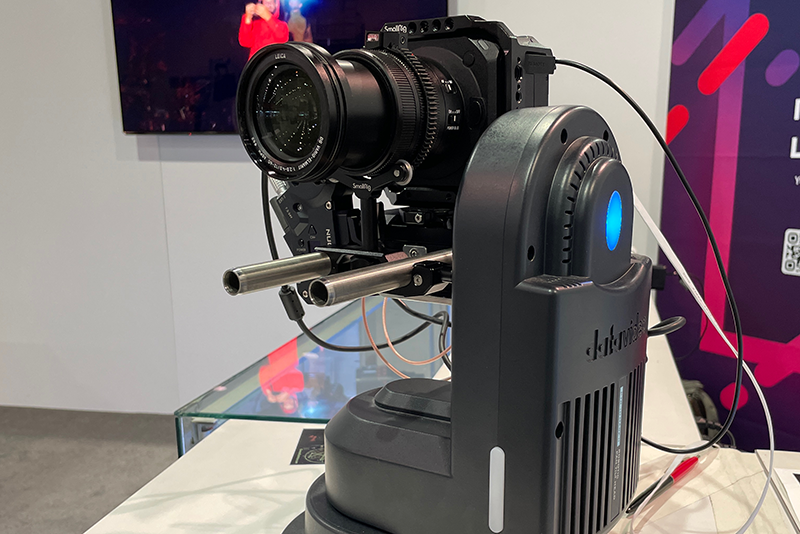John Porterfield integrates the BGH1 for church livestreaming
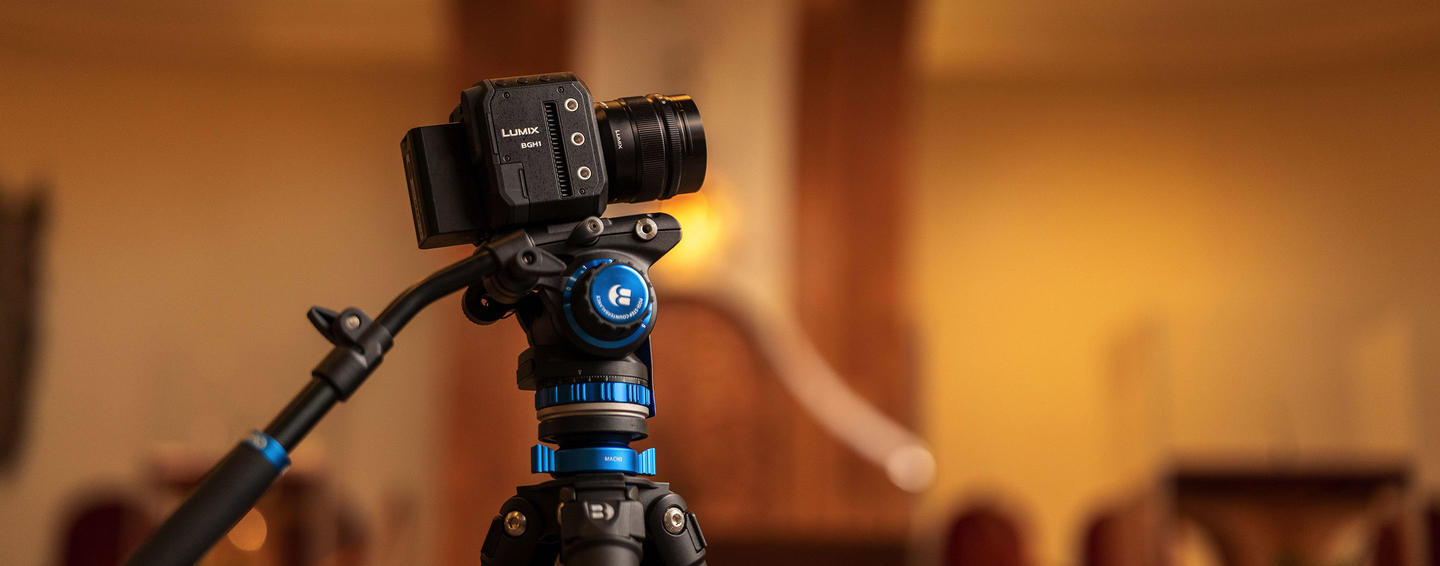
BGH1: House of Worship Livestreaming
Social180Group’s John Porterfield talks church livestreaming and integrating the LUMIX BGH1 box-style camera
During the pandemic, congregations were unable to get together but many churches were able to grow their audience through livestreaming. They were able to reach people outside of their local area, as well as reconnect with former members who moved to a different location. A Webcast Producer and Tech Streaming Specialist, John Porterfield has been working in the livestreaming industry for eight years and started in the field as a volunteer at his local church, Harvest Christian Fellowship in Riverside, CA. At Harvest, which has three main campuses (Riverside, Orange County, Maui), he worked on multiple multi-stream broadcasts per week, campus to campus streaming, and major events.
This led to an opportunity for Porterfield to work with other churches as an advisor/integrator for livestreaming and specialized services. In 2014, he founded Social180Group to help create and deliver unique digital experiences in managed production services for livestreaming, which includes internet-based cloud technologies for video mixing and multi-streaming solutions. He also posts videos on his YouTube channel, JP’sChalkTalks, where he covers the livestreaming industry and hosts conversations with industry leaders.
John Porterfield has worked in the livestreaming industry for over eight years and his Social180Group helps create and deliver managed production services for livestreaming.
Church Livestreaming Pre- and Post-Pandemic
According to Porterfield, livestreaming for churches is divided into three areas – small, medium, and large congregations. Most small churches do not have a livestreaming solution in place due to lack of in-house expertise, budget constraints, and the simple fact that their congregation was already inside the church, so streaming wasn’t as essential before the pandemic. Large churches such as Harvest, had some form of a livestreaming production workflow, as well as people resources to help support a weekly broadcast, or an important event. “When the pandemic hit, it changed the whole format structure of going completely online, which forced even the smaller churches to adopt a livestreaming solution for their environment,” explained Porterfield. “It was like the wild west, trying to get cameras, audio and PCs – whatever you needed to try and produce something. At Harvest, we had a plan in place, and we were fortunate that we already had a basic setup to support a fully online church and playback for live simulated live services for the church. Post-pandemic, I think most churches are working to fine-tune what was pulled together during the pandemic and transition everything to a more structured livestreaming platform.”
Since most churches don’t have a support staff to produce a livestream broadcast, they rely on volunteers. At the beginning of the pandemic, the first question Porterfield would get from churches was, “What should we go buy?” Porterfield was more concerned whether the church had the people and resources in place to put together a production, or to modify their current environment to produce a higher quality broadcast. “When I started at Harvest as a volunteer, I came with a technology background,” revealed Porterfield. “Mostly, it’s about advising churches to make sure that they have the right infrastructure in place in starting with their IT network since live streaming is so dependent on it, in addition to other crucial areas in audio, lighting, and video.”
Porterfield managing a livestream production
Basic Livestream Setup
In setting up a livestreaming setup, Porterfield’s first recommendation is starting with Blackmagic ATEM Mini-series of products because they are high-quality production mixers that can easily embed video and audio to stream direct to Facebook Live or YouTube, “There are many choices now and options to consider,” said Porterfield. “At first, I will advise churches to capture their services first before livestreaming. It gives you a better opportunity to fine-tune what you need to do before you go live.”
There are also several software-based livestreaming solution and internet cloud-based options that Porterfield favors. For Apple based systems, he recommends Ecamm and vMix is popular for PC. In the cloud space, tools like easylive.io (a LiveU company) where you can send your live feed from an on-site system like vMix or streaming appliances such as Epiphan and others for multi-streaming and specialized set of services supporting video production needs.
For churches new to livestreaming, Porter recommends Blackmagic ATEM Mini-series of products because they are high-quality production mixers and can easily embed video and audio to stream direct to Facebook Live or YouTube,
For churches that are just starting out, internet-based tools like Restream.io let you send a livestream to several online streaming services, including social media, and now offer their own web player to use. He also notes there are several customized video streaming services providing additional video streaming services for churches, and this provides additional options with other streaming hardware solutions to fit specific needs. “There are many choices and ways to build it now compared to when I started," said Porterfield. "The key is creating the ability to scale and build quality of your livestreams.”
According to Porterfield, as technology progresses in the field of live streaming, cloud-based remote production tools will allow you to fully mix a live event, or playback, and minimize costs for onsite sources, as well as the management of live streaming encoders remotely via the internet.
Closeup of the LUMIX BGH1
Finally, he suggests obtaining a single high-quality camera. “For churches, a livestream is really trying to amplify what we are doing in house to those watching online to feel like they are included as part of the church,” he explained. “We’re trying to amplify what we're doing so people will share that experience in terms of the worship experience and the message that is being conveyed."
Integrating the LUMIX BGH1
Porterfield recently worked with Pastor Jason Powell at Jesus City Church in Montgomery, AL to produce a livestream broadcast with a single LUMIX DC-BGH1 camera, a compact and lightweight box-style camera that is ideal for broadcasting, livestreaming, or cinema capture. Since Porterfield is based in Orange County, CA, he worked remotely with Powell in Alabama to set everything up. Although it was a new church and a startup in terms of livestreaming, according to Porterfield, Jesus City already a solid network setup. The first thing Porterfield did was set up LUMIX Tether on Powell’s laptop and used Splashtop to remote into his laptop to talk directly to the BGH1. From there, he was able to configure the camera and have everything set up in place for the livestream.
Front exterior of Jesus City Church where Porterfield integrated a BGH1 for a livestream service
Knowing there would be no camera operator, Porterfield chose the LUMIX G X Vario PZ 45-175mm f/4-5.6 lens. “The beauty of that lens is the ability to control zoom through LUMIX Tether,” he explained. “That lens was very helpful in terms of being able to zoom out from a wide shot to get the stage platform itself, and then to be able to push into Jason getting his message across. LUMIX Tether gives us the ability to talk to the camera and manage some of the setup, including focus. If you combine that with multiple BGH1 cameras, you’re able to incorporate a lot of functionality that previously didn’t exist. From a livestreaming specialist’s perspective, that is very helpful for a technical production.”
With the BGH1, Jesus City Church’s livestream was broadcast in 1080 on its YouTube channel, which is standard for most churches. Porterfield shot at 59.94-fps, although it was streamed at 29.97. “Because of the way we were able to talk to the camera, we utilized features such as exposure control, focus controls on when we might hit the [Push] AF button,” he said. “Jason moves around on stage a lot, so we used tape on the floor. In general, he knows where he’s going to step and where his limits are. If you’re doing anything with one camera, you want to set a perimeter of where you’re walking so you don’t walk out of view of the camera.”
Jesus City Church Pastor Jason Powell delivering a sermon livestreamed by the BGH1
BGH1 Versatility
Overall, Porterfield thinks the BGH1 is extremely flexible for livestreaming. For a small church, it can be used as a single camera livestream and for a larger church, it can be utilized for specialty shots and unique angles. “You can also stream directly out of the camera since it is on the network, which is a value add for churches in providing another way to livestream without a production switcher,” explained Porterfield. “I can take that stream out of the camera via RTMP, or another process, and transport the livestream where I can produce it remotely through a managed production element.”
Porterfield recently attended InfoComm 2022, and observed the BGH1 as a Pan, Tilt, Zoom solution with the Datavideo PTR-10 Mk II Robotic Pan Tilt Head and RMC-180 Mark II Camera Controller. “That opens a whole new world because now it's not just a fixed solution where it's mounted in a fixed location,” revealed Porterfield. “Now, you can use some of the Pan, Tilt, Zoom functions through other technologies, like NDI, through other third-party vendors in the industry to utilize the camera. Because of this, the BGH1 should certainly be reviewed and incorporated, and I'm very excited to utilize it further in my work.”
BGH1 in a Datavideo PTR-10 Mark II Robotic Pan Tilt Head to be used as a PTZ solution
To learn more, or to work with John Porterfield, visit his website at www.social180group.io.
